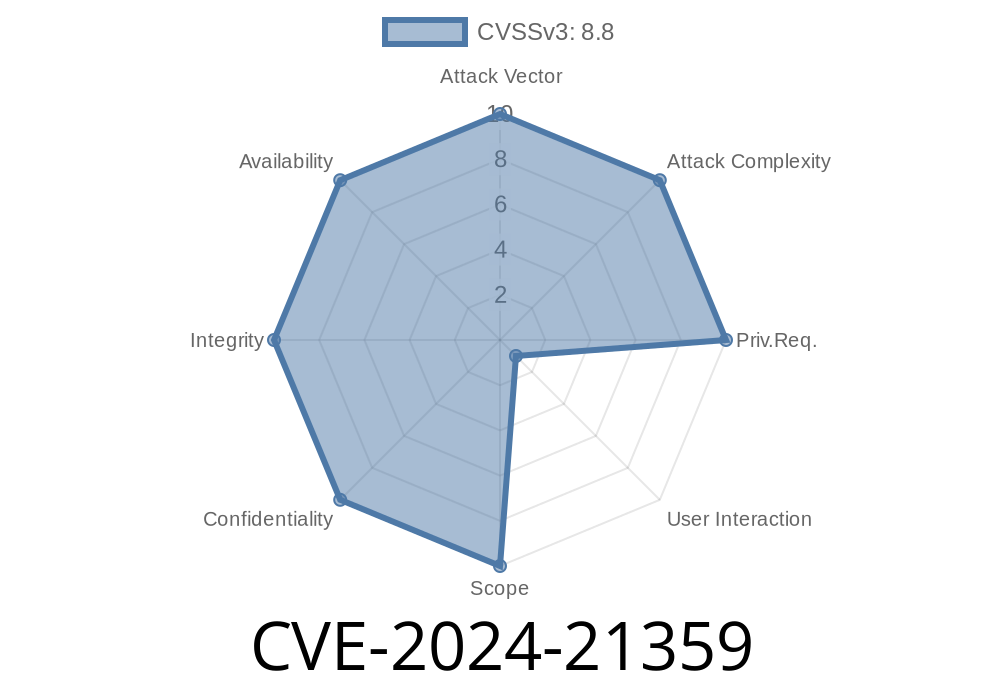In this blog post, we will delve into the recently discovered vulnerability CVE-2024-21359, related to the Microsoft Windows Defender Application Control (WDAC) OLE DB provider for SQL Server. This vulnerability allows an attacker to remotely execute arbitrary code on affected systems. The blog will cover the details of the exploit, provide code snippets to understand the issue, and share links to the original references for those interested in learning more about this vulnerability.
Background
The vulnerability was found in the OLE DB provider for SQL Server, a component that allows applications written in C++, C#, or any other language to access Microsoft SQL Server databases via the Object Linking and Embedding Database (OLE DB) technology. To understand the significance of this vulnerability, let’s first discuss what OLE DB technology is and how it works.
OLE DB is a set of interfaces developed by Microsoft for the uniform access of different types of data. It allows applications to communicate with various data sources, such as spreadsheets, email systems, or in this case, SQL Server databases. The provider for SQL Server is a specific implementation of the OLE DB interfaces designed to enable applications to interact with Microsoft SQL Server.
Vulnerability Details
The vulnerability CVE-2024-21359 is categorized as a Remote Code Execution (RCE) vulnerability. This means that an attacker could potentially execute arbitrary code on the target system with the privileges of the user running the affected application. To successfully exploit this vulnerability, an attacker would need to send crafted input to a vulnerable application, causing a buffer overflow in the OLE DB provider implementation.
To better understand how the buffer overflow can be triggered, let's go through a code snippet that demonstrates the vulnerable function.
#include <stdio.h>
#include <string.h>
#include <libole_sqlserver.h>
int vulnerableFunction(char *userInput)
{
char buf [256];
strcpy(buf, userInput);
int result = libole_sqlserver_process(buf);
return result;
}
int main(int argc, char *argv[])
{
if (argc < 2)
{
printf("Usage: %s <SQL query>\n", argv[]);
return 1;
}
int result = vulnerableFunction(argv[1]);
printf("Result: %d\n", result);
return ;
}
In this snippet, the vulnerable function vulnerableFunction takes a user-supplied input, which is expected to be an SQL query, and copies it into a fixed-size buffer using the strcpy function. Since the strcpy function does not perform any bounds checking, it is possible for the attacker to supply an input that is larger than the buffer, causing a buffer overflow. This buffer overflow could then be exploited by an attacker to execute arbitrary code on the target system.
Mitigation and Remediation
Upon the discovery of this vulnerability, Microsoft has released a patch that addresses the issue by implementing appropriate bounds checking and fixing the vulnerable vulnerableFunction. Users are advised to apply the patch as soon as possible to mitigate the risk posed by this vulnerability.
In addition to applying the security patch, users can also follow security best practices and guidelines, such as:
Minimizing the privileges of the user account running the affected application
- Skipping the use of vulnerable functions like strcpy and opt for safer alternatives (e.g., strncpy, strlcpy)
For more information on this vulnerability, refer to the following resources
1. Original CVE details: https://cve.mitre.org/cgi-bin/cvename.cgi?name=CVE-2024-21359
2. Microsoft Security Advisory: https://msrc.microsoft.com/update-guide/vulnerability/CVE-2024-21359
3. OLE DB Provider: https://docs.microsoft.com/en-us/sql/relational-databases/native-client-ole-db/getting-started-with-native-client-ole-db-provider-for-sql-server
Conclusion
The discovery of CVE-2024-21359, a remote code execution vulnerability in the Microsoft WDAC OLE DB provider for SQL Server, serves as a reminder that regular security audits and updates are essential to maintaining the security of your systems and data. By staying informed about new vulnerabilities, applying patches promptly, and following best security practices, you can help protect your systems from potential threats.
Timeline
Published on: 02/13/2024 18:15:52 UTC
Last modified on: 02/13/2024 18:22:58 UTC
